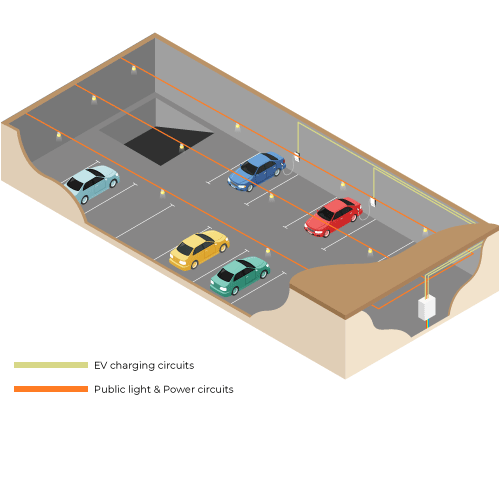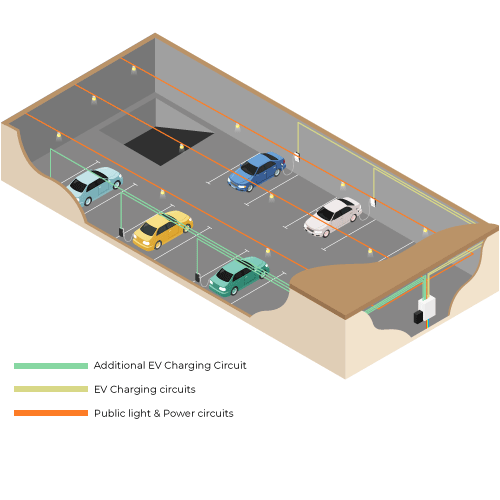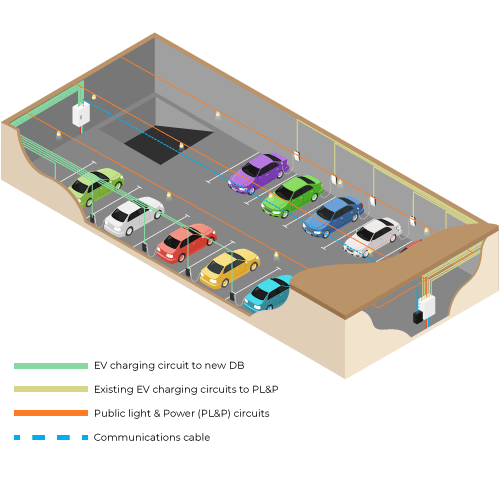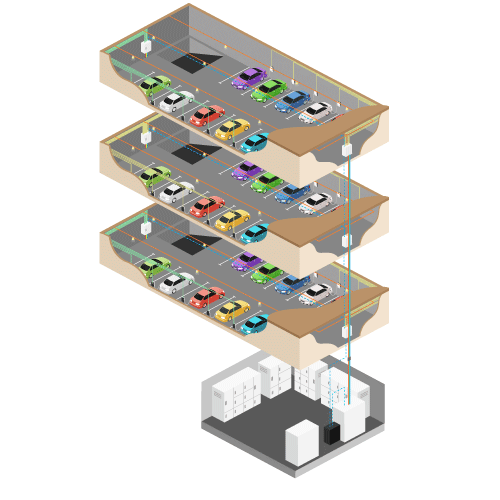Why Choose CORE as your EMS?
CORE – an Australian innovation engineered by JET Charge, is a single ‘on premise’ intelligent, holistic, and autonomous EV energy management system (EMS) capable of managing up to 1000 smart EV chargers across common electrical & data infrastructure. Our world leading solution provides dynamic power management, single point administration, energy consumption real time monitoring, electrical asset safety and 3rd party integration to support your EV charging installation.
Chances are if your building is an apartment or commercial site with multiple EV charging needs, the JET Charge CORE (EMS) is a vital and efficient addition to your site’s electrical infrastructure offering resilience, capacity, and cost savings when scaling up more charging stations to support growing EV adoption.
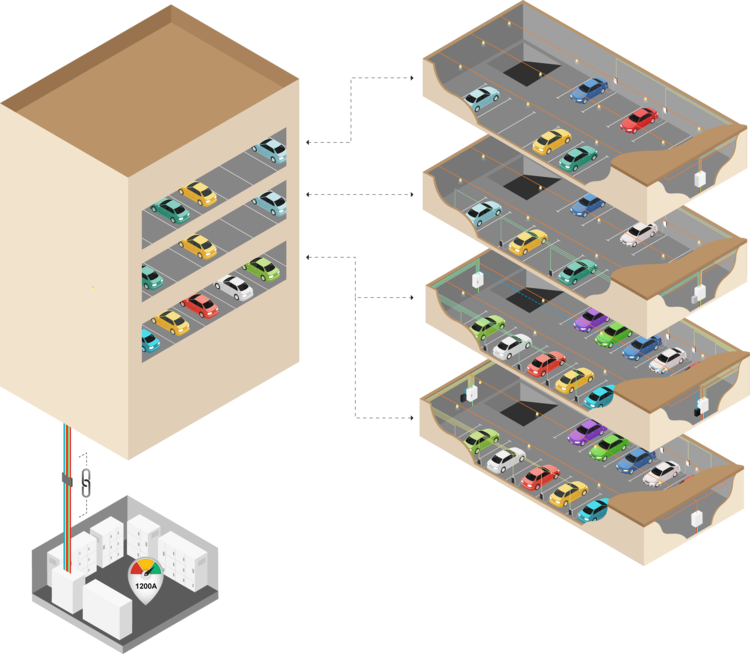
Energy Management System Benefits for Business and Building Owners
Protect Electrical Assets
Freedom to Choose

Charge more Vehicles
How does CORE EMS work?
CORE is the smart heart of your building-wide EV charging system and uses digital analytics to optimise an increasing number of connected EV charging stations. Just like a ‘digital traffic cop’ CORE automatically diversifies or juggles charging sessions based on set conditions creating more equitable charging for all users and in turn protecting the building’s electrical infrastructure, ensuring EV charging sessions don’t over subscribe the facility power supply.
Energy efficiency of the charging activity is also increased where dynamic load management, time shifting, and renewables can contribute to reduced energy costs and usage, and create a more sustainable outcome for your building.
JET Charge CORE monitors the building’s power demand in real time and adjusts the charging rate of each charging station dynamically. We’ve illustrated a typical charging scenario in an apartment car park to show how load is managed at peak & off-peak periods on a weekday.
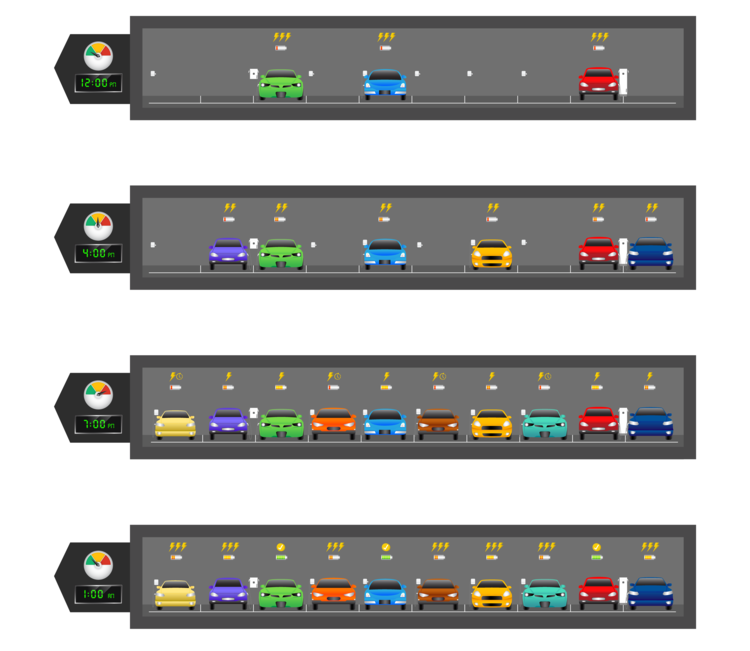
12pm — As most residents are out for work and building has a low power demand, EV chargers can be set to maximum charging for the low number of cars plugged in.
4pm — As some residents return home and plug in their car, EV chargers will reduce their output to match the building’s increased demand.
7pm — This is the peak period for the building with a majority of residents at home with their car plugged in. The JET Charge LMS will moderate the load off each charger to stay within the network’s limits.
1am — This is the off-peak period for the building when residents are sleeping and demand is at its minimum. EV chargers are operating at their maximum for a full charge overnight.
What do you want to provide to EV owners?
JET Charge CORE’s fully flexible and agnostic central EMS permits versatile scaling up of multiple EV chargers on a single site, whilst managing all chargers automatically. Whether you are starting small or planning for a bigger EV future, JET Charge CORE provides an important foundational back bone of your charging system. Here some examples of how JET Charge CORE can be a crucial partner in an apartment setting:


